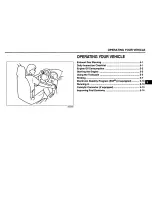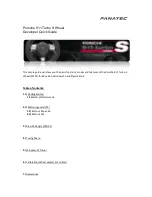
1801
Tires
Tread wear indicators (TWI) are
required by law. These indicators are
located in six places on the tread cir
cumference and become visible at a
depth of approx. 2 mm (1/i6 in), at
which point the tire is considered worn
and should be replaced.
The tread wear indicator appears as a
solid band across the tread.
Warning!
Do not allow your tires to wear
down too far. With less than 3 mm
(Vs in) of tread, the adhesion
properties on a wet road fall off
sharply.
Depending upon the weather and/
or road surface (conditions), the
traction varies widely.
Specified tire pressure must be main
tained. This applies particularly if the
tires are subjected to high loads
(e.g. high speeds, heavy loads, high
ambient temperatures).
Aquaplaning
Depending on the depth of the water
layer on the road, aquaplaning may
occur, even at low speeds and with
new tires. Avoid track grooves in the
road and apply brakes cautiously in
the rain.
Tire traction
The safe speed on a wet, snow cover
ed or icy road is always lower than on
a dry road.
You should pay particular attention to
the condition of the road as soon as
the prevailing temperatures fall close
to the freezing point.
Warning!
If ice has formed on the road, tire
traction will be substantially
reduced. Under such weather
conditions, drive, steer and brake
with extreme caution.
We recommend M + S radial-ply
tires for the winter season for all four
wheels to insure normal balanced
handling characteristics. On packed
snow, they can reduce your stopping
distance as compared with summer
tires. Stopping distance, however, is
still considerably greater than when
the road is wet or dry.
!
17
D
r
iv
in
n
In
s
t
r
ii
r
t
in
n
c
Содержание 190 E 2.6 1989
Страница 1: ......
Страница 3: ...Owner s Manual 190E2 6 Model 201 1989...
Страница 13: ...11 Instruments and Controls...
Страница 22: ......
Страница 62: ......
Страница 98: ......
Страница 111: ...Index 109...
Страница 116: ...DAIMLER BENZ AG Stuttgart Untertuerkheim...
Страница 117: ......
















































